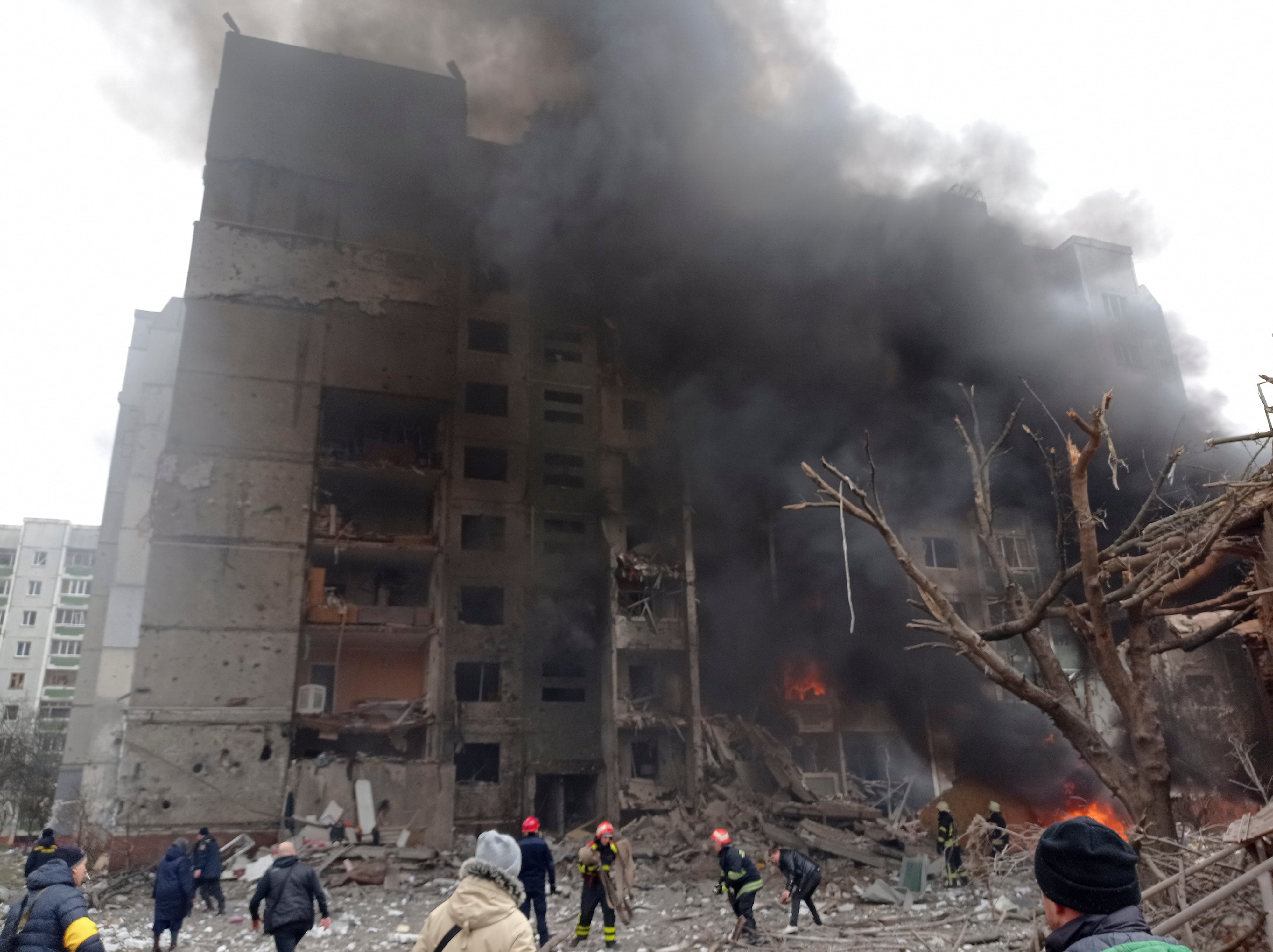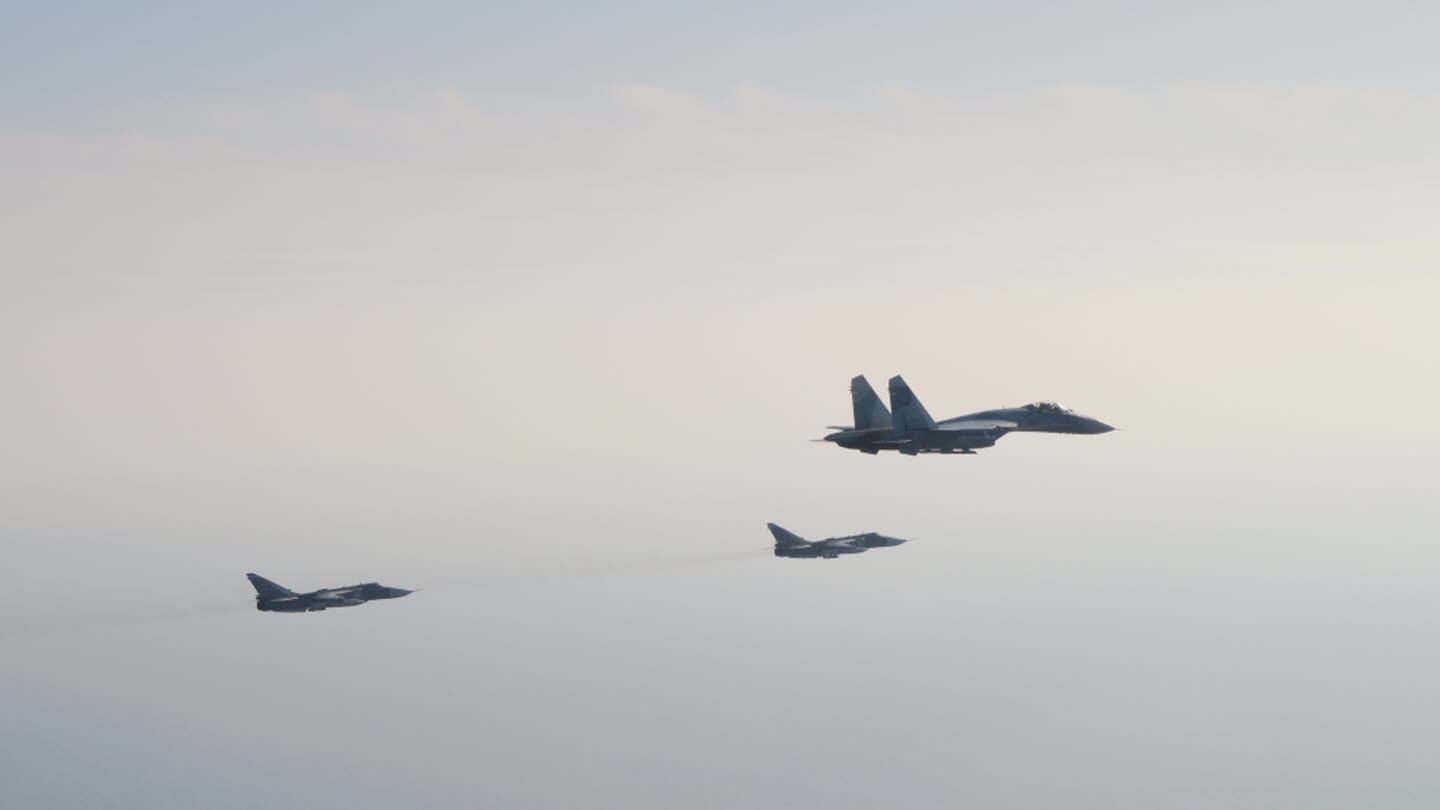NATO has nearly doubled the number of military jets on alert across Europe amid concerns that Russia’s reckless flying in international airspace could escalate alongside its war in Ukraine.
The alliance’s move to constantly guard its eastern edge highlights how rapidly the security situation has evolved in and out of Ukraine over the past 10 days, as well as the stakes of NATO’s biggest test since its founding in 1949.
More than 60 NATO planes are on “high alert” at all times to await possible airspace violations, the alliance said in December. That’s grown to more than 100 combat aircraft now rotating through the sky in shifts.
A force of myriad fighter aircraft — like American F-15s, F-16s and F-35s, plus NATO Eurofighters — has shifted in the past week from dispatching jets as needed to escort uncooperative Russian pilots, to “actively defending allied airspace,” NATO’s Allied Air Command spokesperson Jonathan Bailey said Friday.
“There have been scrambles in response to Russian air activity in international airspace where they are not complying with air safety regulations,” Bailey told Air Force Times. “We are maintaining 24/7 patrols in the skies along our eastern borders.”

Air policing planes identify and address renegade aircraft, such as when allied pilots intercept Russian military jets that veer near their airspace or if a civilian plane is unresponsive or hijacked. They’re not allowed to fire unless fired upon when flying over a foreign country; most interdictions take place without incident and do not enter allied airspace.
“Russian military aircraft often do not transmit a transponder code indicating their position and altitude, do not file a flight plan or do not communicate with air traffic controllers, posing a potential risk to civilian airliners,” NATO noted in 2020.
As of Feb. 26, the third day of Russia’s invasion of Ukraine, NATO air policing assets had not interacted with Russian aircraft since the war began, Allied Air Command told Air Force Times. That changed as the following seven days unfolded.
RELATED

Still, Bailey noted the transatlantic alliance has not intercepted more Russians than usual in recent months. He did not say how many, how often or where those incidents are happening.
Russian pilots aren’t limiting their bad behavior to NATO nations. Four Russian fighters entered Swedish airspace on Wednesday, prompting the Nordic country to send up its own Gripen jets to see them out.
Two Su-27 and two Su-24 fighters violated Swedish airspace over the sea east of Gotland, an island off Sweden’s East Coast, the country’s Air Force said the same day. The event was “brief” and under control, the service said.
“With the current situation as backdrop, we take this incident very seriously. Russia’s conduct is unprofessional and irresponsible,” Swedish Air Force boss Maj. Gen. Carl-Johan Edström said in a release.
Like Ukraine, Sweden likely would not benefit from direct military assistance from the U.S. and much of Europe if Russia escalates matters. It has not formally joined NATO, preferring instead to maintain official neutrality.
Fending off Russian aggression in the air has taken on a darker tone than usual for NATO and its neighbors as Ukraine burns next door.
“NATO fighter jets scrambled around 370 times across Europe in 2021, mostly to check aircraft flying unannounced near allied air pace,” the alliance said in a Dec. 28 press release. “Around 80 percent of the missions, 290 in total, were in response to flights by Russian military aircraft.”
Most of those instances occurred in the Baltics, over Estonia, Latvia and Lithuania, where the alliance has flown air policing missions since 2004, NATO said. One intercept can involve any number of aircraft.
That level of air policing operations was lower than in 2020 but generally on par with recent years. NATO forces scrambled more than 400 times in 2020, including about 350 in response to Russian flights — a “moderate increase” from 2019, the alliance said.
“NATO is vigilant, and we will always do what it takes to protect and defend all allies,” spokesperson Oana Lungescu said in December.
Rachel Cohen is the editor of Air Force Times. She joined the publication as its senior reporter in March 2021. Her work has appeared in the Washington Post, the Frederick News-Post (Md.), Air and Space Forces Magazine, Inside Defense, Inside Health Policy and elsewhere.





